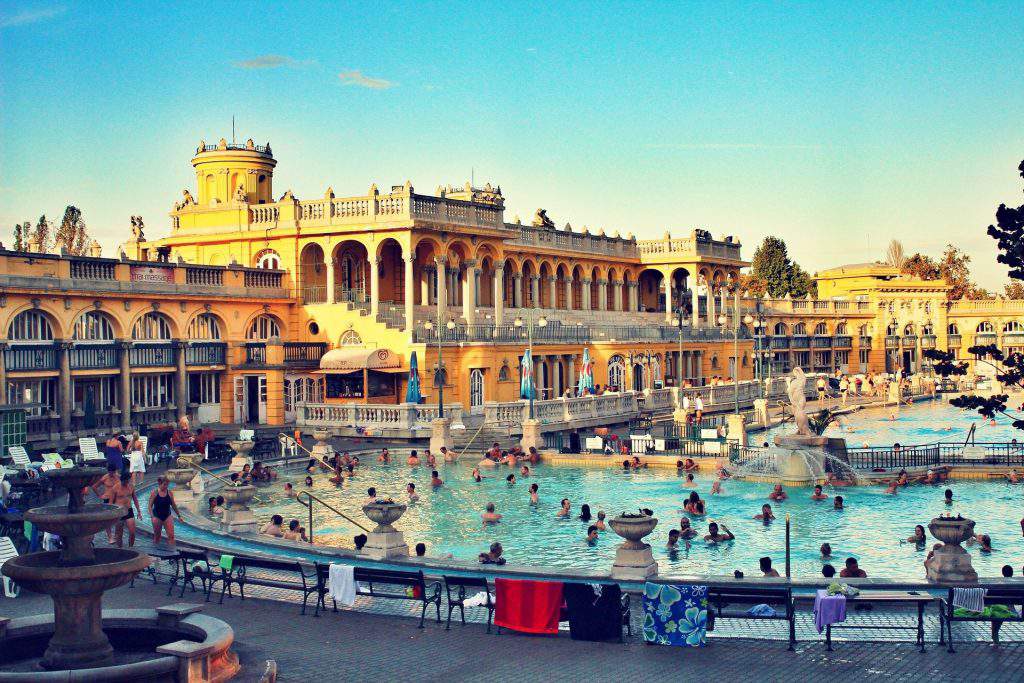The secrets of the baths of Budapest

It is summer, the weather is “on fire”, and most of us can’t wait to cool down in a pool. Lucky for us, the pool and water selection is quite wide in Budapest, so we suggest that you stop by one of the swimming pools, spas, historic baths of the city. To make your choice easier, funzine.hu collected some curiosities and secrets about five of the most popular baths.
Gellért Bath
- There are documents from the 15th century that already mentioned the “magical” springs found under the thermal bath. Later they were adored by the Turks, since the bath was bigger and its water was hotter compared to other baths.
- It was called Sárosfürdő (Muddy Bath) in the 17th century due to the spring mud at the bottom of the pools.
- The bath is a beloved location of both Hungarian and international commercials and movies. For instance, the Danone commercial and certain scenes of Spy were shot there.

Lukács Bath
- In the 12th century, Saint John knights occupied with nursing settled down in the neighbourhood of today’s Lukács Bath. They were followed by the orders of Rhodes and Malta, who built a bath near their monastery.
- The bath also functioned in the Ottoman era, but the power of springs was used for gunpowder manufacturing and grain milling. After the recapture of Buda, the bath became the property of the treasury.
- In 1884, Fülöp Palotay bought it from the treasury and reconstructed the whole institution. A sanatorium and a hydrotherapeutic department were built, and the pools were rebuilt. People desiring to heal came from all over the world and left marble plates of gratitude on the wall of the bath’s yard.
- It was the beloved meeting point of white-collar workers, politicians and artists. It is believed that one of the city’s most effective thermal springs is found here.
- Before the change of regime, a party secretary couldn’t take the view of the Saint Luke statue on the wall anymore, so he took a ladder and a hammer. But when he tried to inflict the first blow on the statue, the ladder slipped and he fell badly to the ground. During the restoration of 2006, the so called “shelled crack” caused by the party secretary was left in the statue.

Rudas Bath
- No matter how many generations the story is traced back to, there has never been a regular guest who suffered from any kind of cancer.
- It is said that the water of the Juventus spring is a libido and appetite booster, so prepare to get “hungry”.

Széchenyi Bath
- The Széchenyi Bath is Europe’s biggest bath complex and the N°1 bath of Budapest. Its existence can be owed to mining engineer Vilmos Zsigmondy. He initiated a successful well-sinking in the City Park, where an “Artesian bath” had already functioned in 1881, but it was a temporary bath which didn’t really live up to the needs of the era. This is why the Széchenyi Bath was built in 1913 based on the plans of Győző Czigler.
- It is believed that the thermal water of the bath is a real aphrodisiac. A good example of this is that the hippos’ pool in the Budapest Zoo is filled with the same thermal water. Consequently the majority of hippos in European zoos have Hungarian ancestors due to the outstanding fertility of the hippos living in our zoo.

Király Bath
- The construction of the bath was initiated by Arslan Pasha of Buda in 1565 and was finished by his offspring, Mustafa Sokollu. The Király Bath has never had a direct hot water base. The Turks purposely built it far away from the springs, so that they would have a bathing place even in the case of a siege. The bath’s water has always been supplied by the Lukács Bath.
- After the recapture of Buda, the bath became the property of the König family in 1796. They were the ones who reconstructed the bath in a way that they combined old with new, while preserving its monumental being. The bath got its Hungarian name after the family.
- During WWII the bath was seriously damaged. It was completely renovated in 1950.
- It’s a real authentic Turkish bath. A curiosity is that it still gets its water from the Lukács Bath through the original pipeline made from larch.

Featured image: www.szechenyifurdo.hu
Ce: bm
Source: http://funzine.hu/
elomagyarorszag.hu





